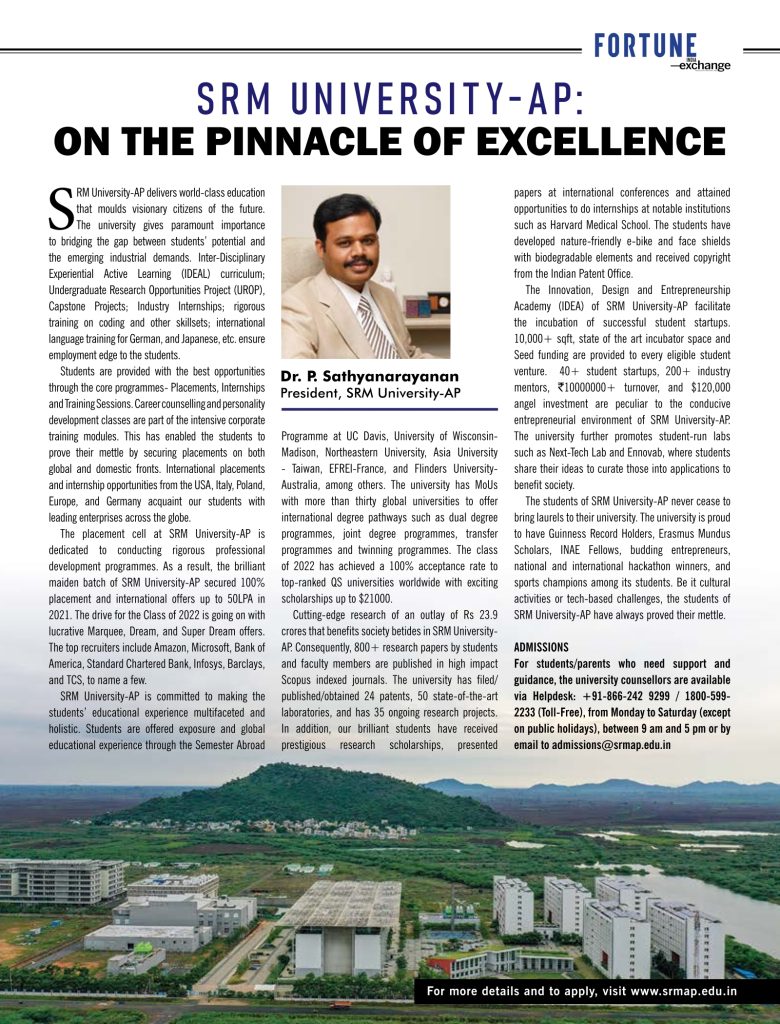A unique bridging facets assembly of gold nanorods
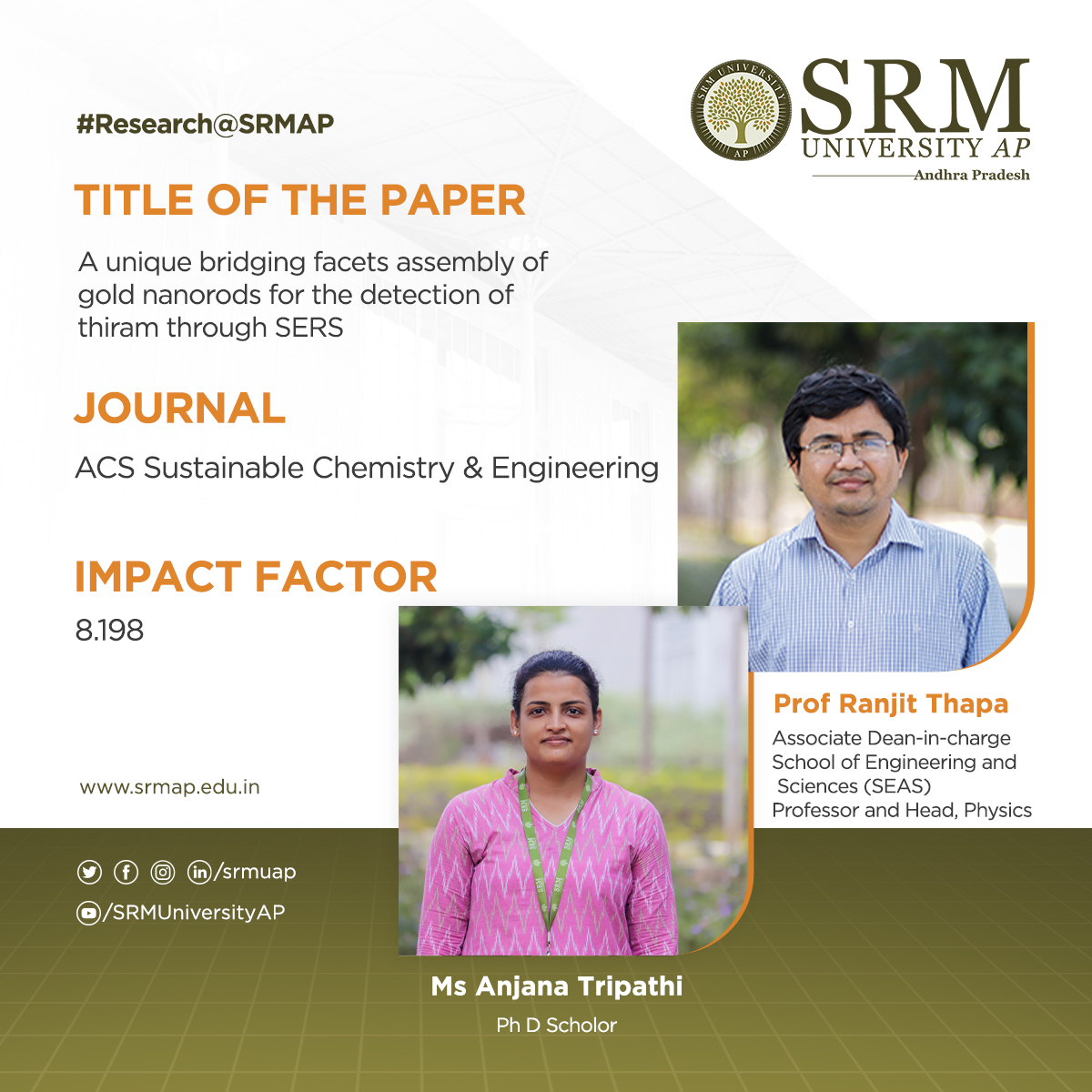 The paper “A unique bridging facets assembly of gold nanorods for the detection of thiram through SERS” has been published by Prof Ranjit Thapa, Professor of Physics and his PhD student, Ms Anjana Tripathi, in ACS Sustainable Chemistry & Engineering having an Impact Factor of 8.198.
The paper “A unique bridging facets assembly of gold nanorods for the detection of thiram through SERS” has been published by Prof Ranjit Thapa, Professor of Physics and his PhD student, Ms Anjana Tripathi, in ACS Sustainable Chemistry & Engineering having an Impact Factor of 8.198.
Abstract
The addition of Au NRs (Gold Nanorods) to TRM (Thiram) of higher and lower concentrations, yields side-by-side assembly (SSA) and bridging facets assembly (BFA), respectively, and exhibited excellent hotspots for the ultra-low detection of TRM. Bridging facets of Au NRs, such as (5 12 0) and (5 0 12) planes are mainly responsible for the BFA. This kind of interaction is observed for the first time and not reported elsewhere. The detailed facets of Au NRs, namely side facets, bridging facets, and pyramid facets, were discussed with the 3D model of Au NRs. The computational studies confirm the SSA and BFA for Au NRs with varying concentrations of TRM are well in agreement with the experimental results.
Research in brief
Au NRs were synthesized successfully using the seed-mediated method and characterized by UV-Vis analysis, SEM, TEM, FT-IR, Raman, and XPS analysis. Synthesized Au NRs were employed for the detection of TRM. Upon adding Au NRs to TRM of higher and lower concentrations yields side by side (SSA) and bridging facet assembly (BFA), validated by TEM analysis. This unique BFA was observed for the first time and not reported before to the best of our knowledge. Elemental mapping confirms the good adsorption of TRM over Au NRs, and FT-IR, Raman, SERS, and XPS analysis confirm the adsorption of TRM on Au NRs through Au-S bond. A uniformity study was performed for the TRM-Au NRs sample using 25 random places and obtained an RSD of ≤ 10% for each peak in SERS. This shows TRM is uniformly adsorbed on Au NRs. LOD and EF were achieved at 10 pM and 2.8 ×106, respectively. Hence, Au NRs are considered an excellent substrate for the detection of TRM. The unique assembly of BFA may play a significant role in the research community to further study the facet-dependent interactions of nanostructures. The computational study was performed to know the reason behind SSA and BFA. The density functional theory (DFT) was carried out using the Vienna Ab-initio Simulation Package (VASP). The Perdew-Burke-Ernzerhof (PBE) functional within Generalized Gradient Approximation (GGA) is adopted to treat the exchange-correlation interactions. These studies confirm the formation of a strong bond between Au and S, as well as the SSA and BFA for higher and lower TRM concentrations with Au NRs. The binding energy of TRM in SSA and BFA is -3.81 eV and 3.19 eV respectively. From the theory, it shows that TRM of lower concentration form BFA and higher concentration of TRM, due to high barrier energy for TRM diffusion, Au NRs form SSA. In this respect, we calculated the activation barrier for thiram migration from edge site (BFA) to in between site (SSA). Results indicate that TRM needs 2.40 eV energy to migrate from the edge site to in between site to form side-by-side assembly. Therefore, for diffusion from edge to in between (SSA) site high-energy barrier is required i.e. higher concentration is required for such configuration. Hence, at low concentration, TRM will form bridge facet assembly and due to high barrier energy for TRM diffusion, the side-by-side assembly is possible only at high concentration.
Practical implementation/social implications
Concerns have grown in recent years about the widespread use of the pesticide thiram (TRM), which has been linked to negative effects on local ecosystems. This highlights the critical need for quick and accurate point-of-need pesticide analysis tools for real-time applications. The detection of TRM using gold nanorods (Au NRs) with a limit of detection (LOD) of 10-11 M (10 pM) and an enhancement factor (EF) of 2.8 × 106 along with 6.2% of signal homogeneity (with respect to peak at 1378 cm-1) achieved through surface-enhanced Raman scattering (SERS). The interaction of Au NRs with TRM is sensitive, and ultra-low detection of hazardous TRM through SERS makes an ideal technique for environmental protection, real-time applications, and analysis of one-of-a-kind materials.
Collaborations
Bhavya M. B, Akshaya K. Samal
Institute: Centre for Nano and Material Sciences, Jain University, Jain Global Campus
Ramanagara, Bangalore 562112, India
- Published in Departmental News, News, Physics News, Research News
Fortune India Magazine Publication
- Published in Newsroom
The key to a successful job interview
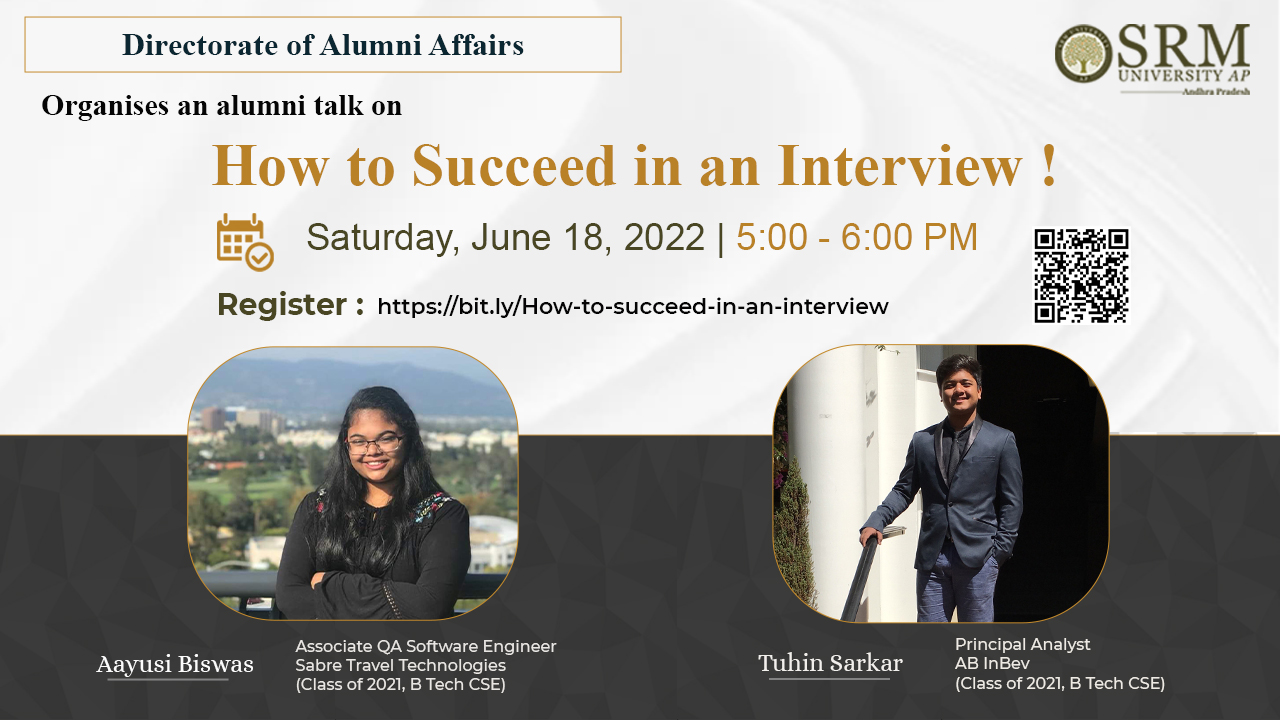
Facing an interview is a nightmare for many. There may be multiple factors lowering your level of confidence. Your depth of knowledge, ability to communicate, body language, dressing style, and an endless list of reasons could affect you in being yourself during an interview. While most of us are highly qualified academically, many are still groping in the dark to present ourselves as professionally qualified. And the sad fact is that, it is your professional persona that wins you a better chance of clearing the interview than your academic qualifications.
The Directorate of Alumni Affairs has scheduled a webinar on ‘How to succeed in an Interview’ with our notable alumni, Aayusi Biswas and Tuhin Sarkar from the Class of 2021, Computer Science and Engineering. Aayusi currently holds the position of Associate QA Software Engineer at Sabre Travel Technologies while Tuhin works as a Principal Analyst at AB InBev.
Date: June 18, 2022
Time: 5.00 pm to 6.00 pm IST
The session aims to groom students to give out their best in any interview. Effective training and practice sessions can bridge the gap in one’s academic expertise and career advancement. The more confident you are in being yourself, the better your possibility of winning your dream job.
Register for the session and walk in confidently for all the interviews ahead!
- Published in Alumni Relations, Events
On an invasive shrub that alters the flora and soils
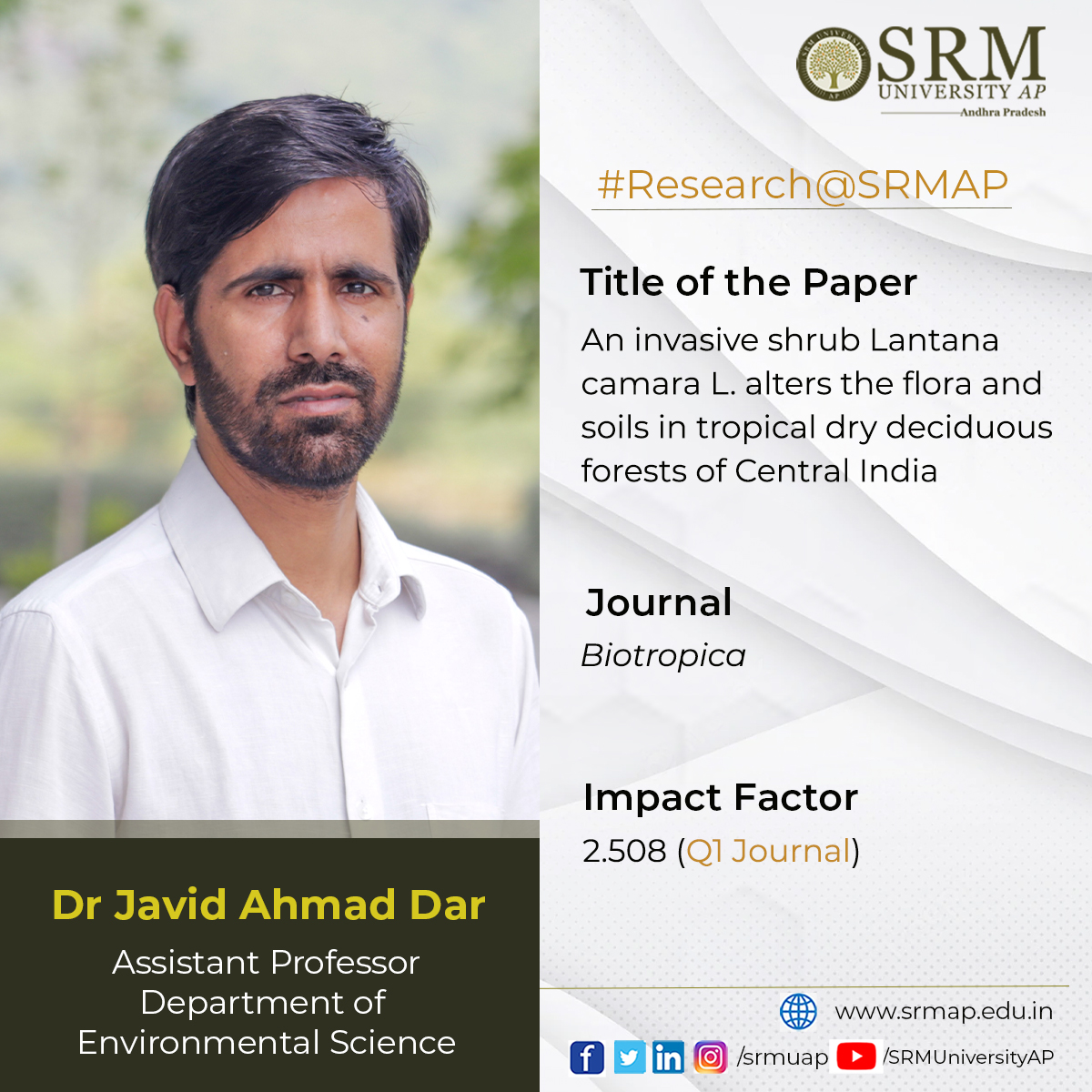 The paper titled “An invasive shrub Lantana camara L. alters the flora and soils in tropical dry deciduous forests of Central India” has been published by Dr Javid Ahmad Dar, Assistant Professor of Environmental Science at SRM University-AP, in “Biotropica” having an impact factor 2.508 (Q1 Journal).
The paper titled “An invasive shrub Lantana camara L. alters the flora and soils in tropical dry deciduous forests of Central India” has been published by Dr Javid Ahmad Dar, Assistant Professor of Environmental Science at SRM University-AP, in “Biotropica” having an impact factor 2.508 (Q1 Journal).
Abstract
The findings of this research reveal how an invasive shrub Lantana camara L. significantly alters the flora and soils in tropical dry deciduous forests of Central India and suggested long-term monitoring studies and proper management strategy.
Practical implementation
The findings would be helpful to forest managers, scientists and policymakers for better understanding, management, and restoration of the invaded landscapes in tropical forest ecosystems.
Collaborations
Prof M. L. Khan, Department of Botany, Dr Harisingh Gour Vishwavidyalaya (A Central University), Sagar, Madhya Pradesh, India.
Prof Raman Sukumar, Centre for Ecological Sciences, Indian Institute of Science (IISc), Bengaluru, India.
Prof Mukund Dev Behara, CORAL, Indian Institute of Technology, Kharagpur, West Bengal, India.
Prof S. M. Sundarapandian, Ecology and Environmental Sciences, Pondicherry University, Puducherry, India.
Future research plans:
Dr Javid Dar’s research plan for the next five years is to bring together several unique aspects of forest ecology which will be focused on carbon dynamics, mortality, microbial diversity and their relationship in shaping the structure and functional aspects of different forest ecosystems in the on-going and future climate change. Another major aspect of the research will be, to focus on ecophysiology and plant functional trait analysis in forest ecosystems as they are vulnerable to climate change and to see the impacts of climate change on diversity, productivity and stand structure in tropical and temperate forest ecosystems.
- Published in Departmental News, ENVS News, News, Research News
Mechanical engineering students develop multi-utility buggy car
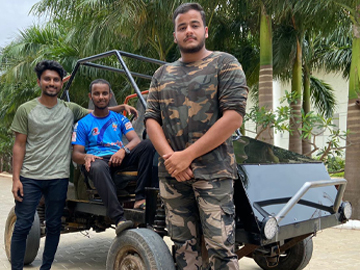 Stories of innovation from SRM AP are not something new! M Tanveer, G Sai Venkat, and Divyansh Awasthi, three vibrant students from the Department of Mechanical Engineering at SRM University-AP, have built a multi-utility buggy car as a part of their final year project work.
Stories of innovation from SRM AP are not something new! M Tanveer, G Sai Venkat, and Divyansh Awasthi, three vibrant students from the Department of Mechanical Engineering at SRM University-AP, have built a multi-utility buggy car as a part of their final year project work.
The students initially planned to build a completely new multi-utility vehicle. Later they slightly modified the idea to make a buggy car from scrap materials, i.e. by gathering the efficiently working components from old and unused cars and making them compatible with the chassis.
Motivated by their admiration for the automotive industry, students had great enthusiasm for building the buggy car. They had an urge to convert theoretical knowledge gained from classrooms into practical working machines. Consequently, the trio developed an off-road diesel buggy to show their prowess in the automobile industry, especially on and off-road cars. A Diesel motor is utilised, which is competent in conveying a speed of 50 kilometres per hour.
The chassis of the buggy is designed and manufactured by the students themselves. The spare parts and connection are from the TATA ZIP car model and incorporated into the buggy fitting to the design. The necessary fitting and binding of spare parts are done according to the driving comfort.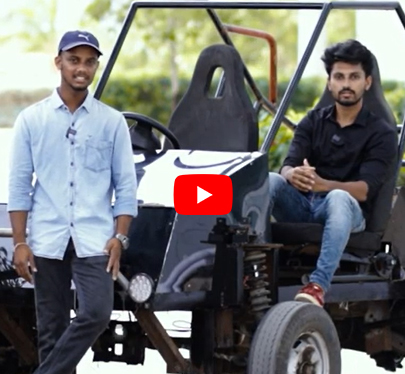
The students expressed their gratitude for the support of their project guide Dr Jasvinder Singh, co-guide Prof Venkata N Nori, and HOD Prof Prakash Jadhav. “We received constant mentorship and guidance throughout our project tenure from them”, said the students. “Whenever we were stuck or were not able to solve a particular problem, or at times were mentally stressed and worn out, our professors gave us proper guidance to warded off our problems and stress, ” they added.
- Published in Blog, Departmental News, Engineering, Innovation, Mechanical Engineering NEWS, News, Students Achievements, Technology
Celebrating International Yoga Day 2022
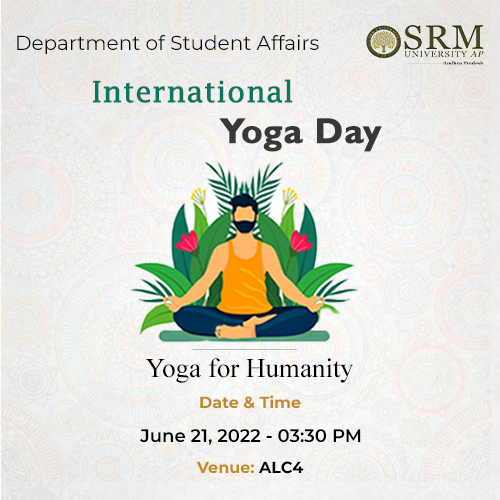
Yoga essentially refers to exploring one’s highest self through the unison of mind and body. The 3000-year-old tradition of yoga is hailed worldwide as a panacea to all human ailments. Yoga promotes holistic well-being through a combination of mindful and muscular practices. As the society is caught in an endless chase for worldly happiness, the philosophy of yoga gains immense importance to regulate and moderate human lives. It reveals the magic of remaining happy and tranquil in being oneself. The ultimate goal of yoga is to reach a sustained state of pure awareness.
The Department of Student Affairs is celebrating International Yoga Day 2022 to pay respect to this invaluable gift of India’s ancient tradition and to illuminate students on the need to make yoga an essential part of their day-to-day lives.
Date: June 21, 2022
Time: 3.30 pm
Venue: ALC 4
The resource persons for the day are Mr Venkata Krishna Kumar S, Associate Professor, Department of Architecture, School of Planning and Architecture-Vijayawada and Mr Ram Pavan, Broadcast Engineer, Doordarshan Kendra, Vijayawada. Mr Venkata Krishna Kumar is a practitioner of Heartfulness for 19 years and is also a certified trainer of Heartfulness since 2021. Mr Ram Pavan has also been practising Heartfulness yoga for the past 15 years and is serving as a trainer with Heartfulness institute with a mission to uplift the standards of life.
Join the celebration to disseminate the power of #yogaforself and #yogaforhumanity.
- Published in Events, Students Affairs Events
Dr Tousif Khan published in Springer Nature
The Department of Electrical and Electronics Engineering is proud to announce that the estimable book of Springer Nature, ‘Soft Computing: Theories and Applications’ has featured three publications by Dr Tousif Khan, Assistant Professor. His publications are part of the book series, Lecture Notes in Networks and Systems (LNNS), Volume 425. The book stimulates discussions on various emerging trends, innovations, practices, and applications in the field of soft computing, ranging from data mining, prediction analysis, control systems, image processing, health care, medicine, agriculture analysis, supply chain management and cryptanalysis etc.
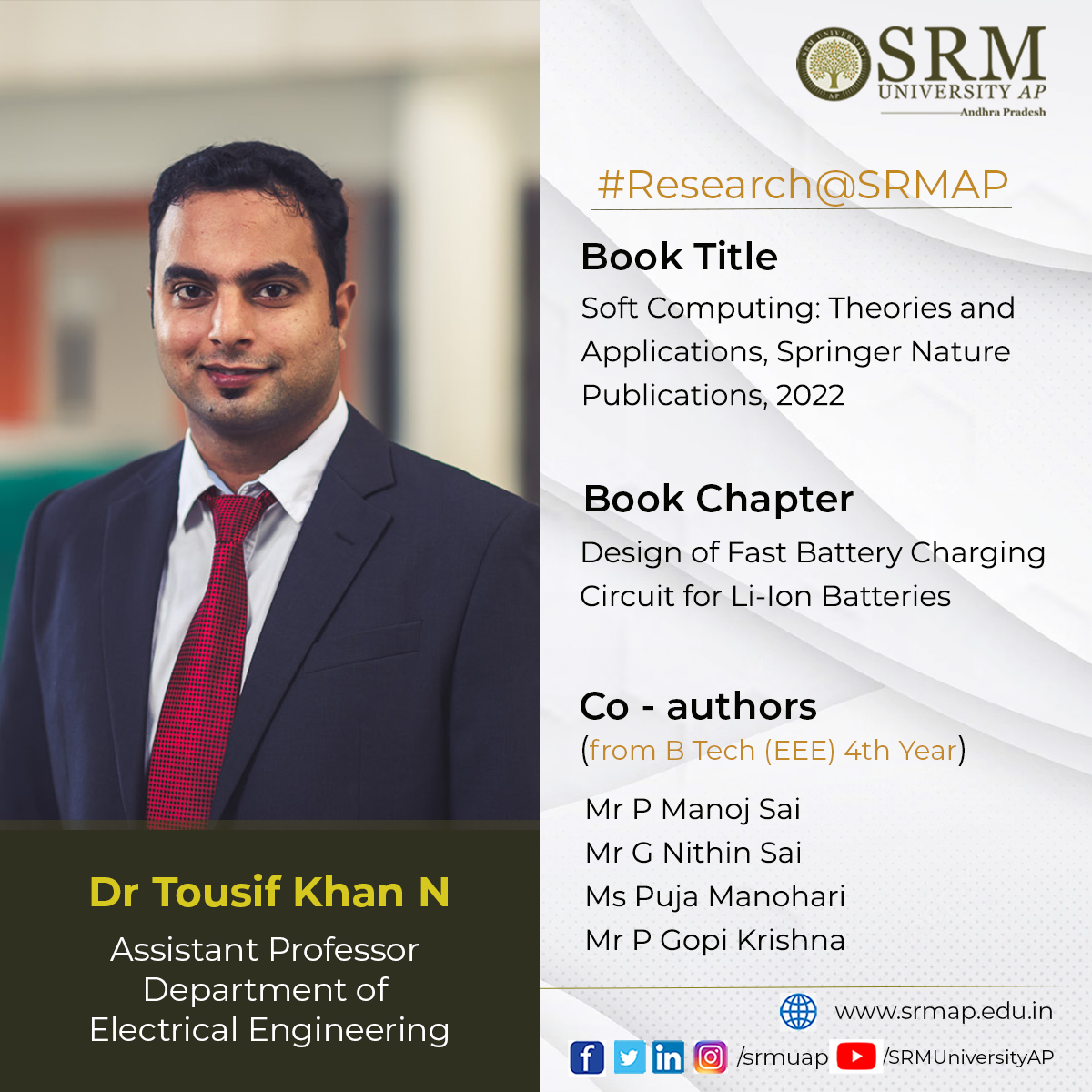 The first chapter titled “Design of Fast Battery Charging Circuit for Li-Ion Batteries” was co-authored by Dr Khan along with the final year EEE students; P Manoj Sai, G Nithin Sai, Puja Manohari, and P Gopi Krishna. In this chapter, a battery charging topology has been designed and developed for the fast charging of Li-ion batteries. The charging circuitry comprises a Proportional-Integral-Derivative (PID) controlled DC-DC buck converter system for reducing the charging time in Li-ion batteries. Battery charging time depends on several factors and the charging current is one of the major criteria. In this work, the buck converter is used to attain a high charging current, besides providing the regulated voltage to the battery. Initially, the AC supply obtained from the mains is converted to DC using an AC-DC rectifier. The rectifier output is further fed to the buck converter to increase the output current of the circuit. The buck converter reduces the output voltage and increases through it.
The first chapter titled “Design of Fast Battery Charging Circuit for Li-Ion Batteries” was co-authored by Dr Khan along with the final year EEE students; P Manoj Sai, G Nithin Sai, Puja Manohari, and P Gopi Krishna. In this chapter, a battery charging topology has been designed and developed for the fast charging of Li-ion batteries. The charging circuitry comprises a Proportional-Integral-Derivative (PID) controlled DC-DC buck converter system for reducing the charging time in Li-ion batteries. Battery charging time depends on several factors and the charging current is one of the major criteria. In this work, the buck converter is used to attain a high charging current, besides providing the regulated voltage to the battery. Initially, the AC supply obtained from the mains is converted to DC using an AC-DC rectifier. The rectifier output is further fed to the buck converter to increase the output current of the circuit. The buck converter reduces the output voltage and increases through it.
The circuit parameters are designed by considering the commercially available Lithium-ion battery LIR18650 as the load with a capacity of 2600 mAh and a nominal voltage of 3.7 V. The considered battery requires a standard charging current of 0.5 A, however, the circuit is designed to provide the rapid charge current of 1.3 A as the output by using the buck converter. The converter is operated in continuous conduction mode and helps in charging the battery under constant current mode. To avoid interruption to the charging current when there is a simultaneous discharge of the battery, further improvement in the closed-loop control action is made by employing a PID controller. Extensive simulation work has been conducted using the MATLAB/Simulink tool. The results obtained suggest there is a significant reduction in charging time under different conditions compared to the conventional method of battery charging.
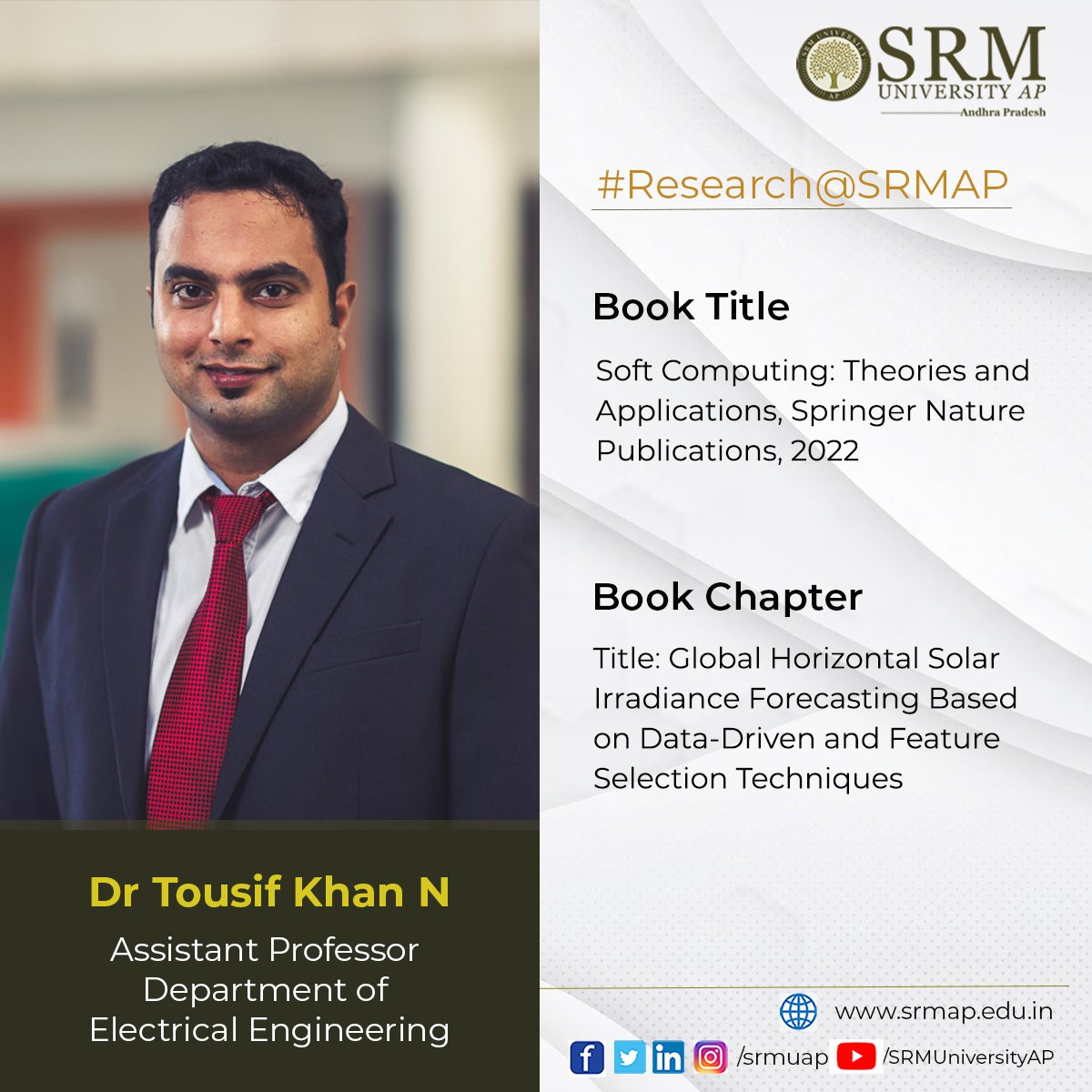 In the chapter, “Global Horizontal Solar Irradiance Forecasting Based on Data-Driven and Feature Selection Techniques”, Dr Khan discusses the need for an accurate solar prediction. It has become an essential part of the renewable energy sector with the rapidly expanding infrastructure of the solar energy system. Over the past decade, various machine learning (ML) algorithms have been used for this purpose. Although the prediction of solar irradiance forecasting has been discussed in many studies, the use of meta-heuristic optimization techniques has not been explored to select features for the forecasting model. This study comprises two meta-heuristic optimization techniques such as simulated annealing (SA) and ant colony optimization (ACO) for feature selection. The results show that feature selection based on meta-heuristics gave better results than models without feature selection.
In the chapter, “Global Horizontal Solar Irradiance Forecasting Based on Data-Driven and Feature Selection Techniques”, Dr Khan discusses the need for an accurate solar prediction. It has become an essential part of the renewable energy sector with the rapidly expanding infrastructure of the solar energy system. Over the past decade, various machine learning (ML) algorithms have been used for this purpose. Although the prediction of solar irradiance forecasting has been discussed in many studies, the use of meta-heuristic optimization techniques has not been explored to select features for the forecasting model. This study comprises two meta-heuristic optimization techniques such as simulated annealing (SA) and ant colony optimization (ACO) for feature selection. The results show that feature selection based on meta-heuristics gave better results than models without feature selection.
Amongst the two optimization methods, ACO outperformed SA with some exceptions. For SA, the declining order of performance observed is extreme gradient boosting (XGBoost), random forest (RF), multilayer perceptron (MLP), decision tree (DT) and support vector regression (SVR), while for ACO the declining order observed is XGBoost followed by MLP, RF, DT and SVR. This manuscript indicates the potential capability of meta-heuristic techniques for accurate prediction of global horizontal irradiance (GHI) given a wide array of feature variables.
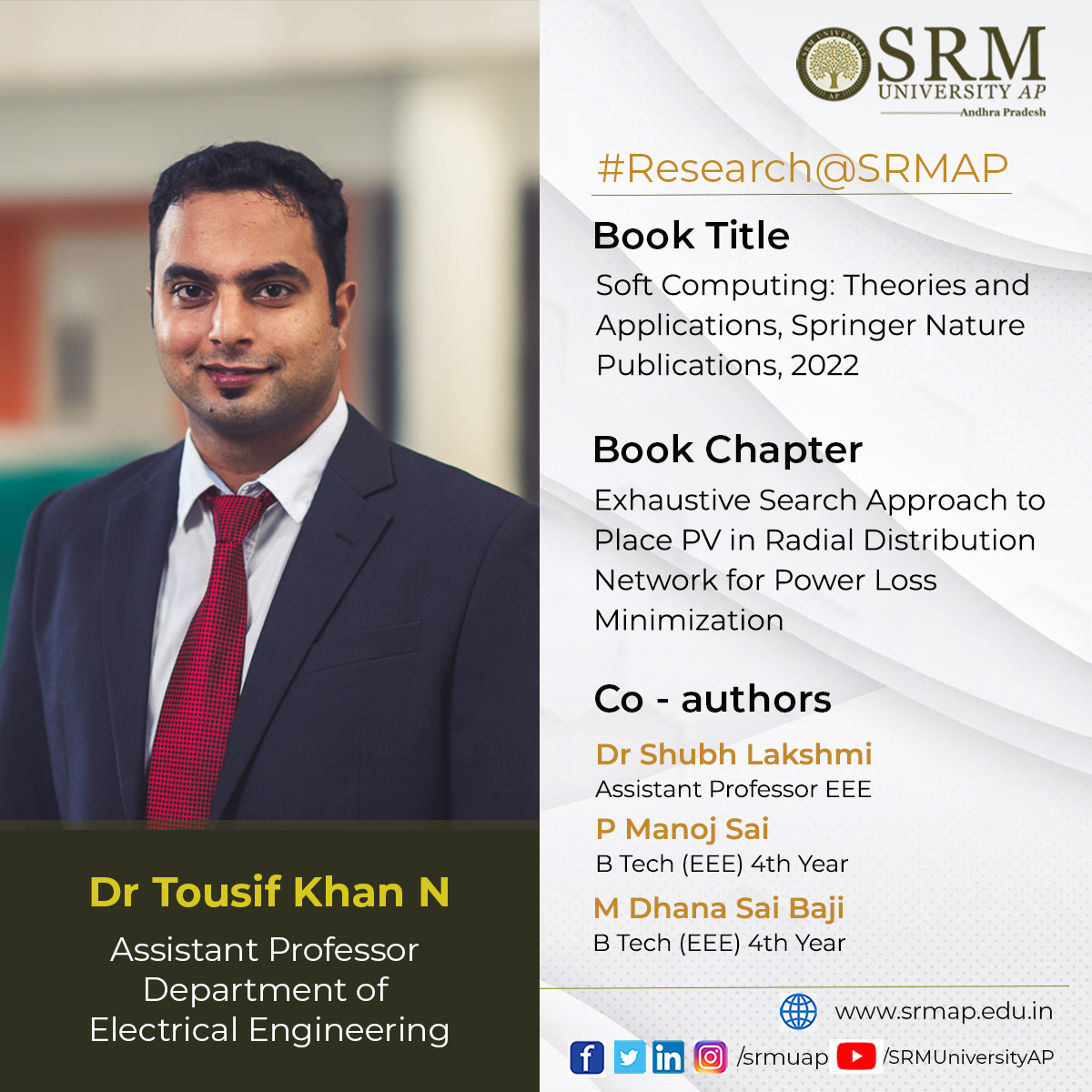 In yet another chapter, “Exhaustive Search Approach to Place PV in Radial Distribution Network for Power Loss Minimization”, co-authored with Dr Shubh Lakshmi, Assistant Professor, and the final year students; P Manoj Sai and M Dhana Sai Baji from the Department of Electrical and Electronics Engineering, an exhaustive search approach to determine the best location and size of PV placement for power loss minimization of radial distribution networks is discussed. In this approach, the network power loss is determined by placing PV in each location, one at a time, and the size of PV in the same location is varied between 10 and 300 kW with an increment of 10 kW.
In yet another chapter, “Exhaustive Search Approach to Place PV in Radial Distribution Network for Power Loss Minimization”, co-authored with Dr Shubh Lakshmi, Assistant Professor, and the final year students; P Manoj Sai and M Dhana Sai Baji from the Department of Electrical and Electronics Engineering, an exhaustive search approach to determine the best location and size of PV placement for power loss minimization of radial distribution networks is discussed. In this approach, the network power loss is determined by placing PV in each location, one at a time, and the size of PV in the same location is varied between 10 and 300 kW with an increment of 10 kW.
The combination of location and size of PV which provides the minimum network power loss can be the best location and size of PV for power loss minimization of radial distribution networks. The forward–backward sweep load flow algorithm is used to incorporate the PV model. The 33-bus radial distribution network is used to demonstrate the approach. The simulation results show that the placement of a suitable size of PV in some specific locations significantly reduces the network power loss.
Publishing the latest advancements in Networks and Systems, The LNNS series will serve as an edifying read for all the researchers and scientists across the globe. Volumes published in LNNS give a deep insight into all aspects and subfields of, as well as new challenges in, Networks and Systems. The series encompasses the theory, applications, and perspectives on the state of the art and future developments relevant to systems and networks, decision making, control, complex processes and related areas, as embedded in the fields of interdisciplinary and applied sciences, engineering, computer science, physics, economics, social, and life sciences, as well as the paradigms and methodologies behind them.
- Published in Departmental News, EEE NEWS, News, Research News
Matrix enabled road distress classification system
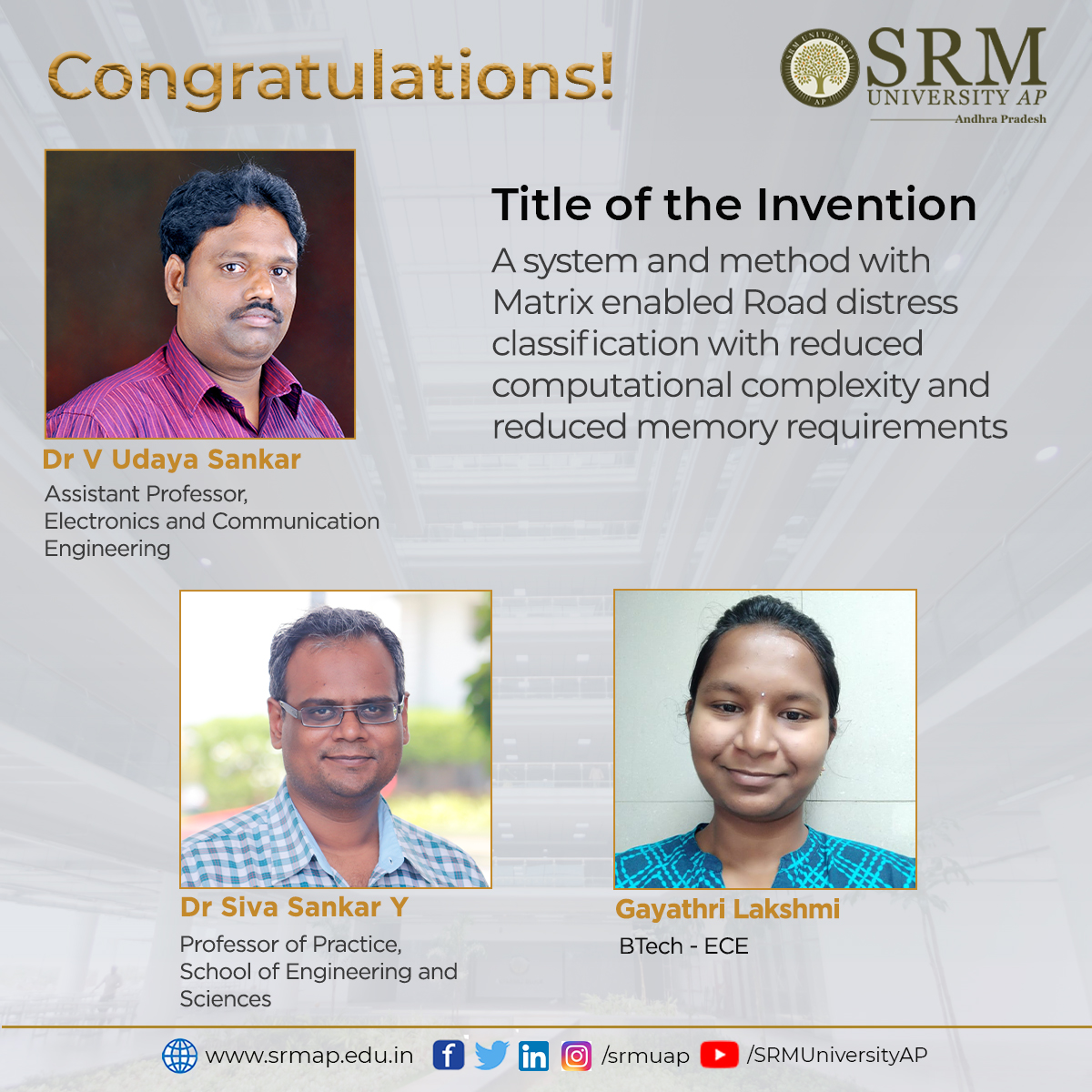
The Department of Electronics and Communication Engineering is glad to announce that Dr V Udaya Sankar, Assistant Professor has published the patent (App no. 202141056542), ‘A system and method with Matrix enabled Road distress classification with reduced computational complexity and reduced memory requirements’, in collaboration with Dr Siva Sankar Yellampalli and Ms Gayathri Lakshmi Chinthakrindi.
This work has applications related to visual inspection systems. While this research considers road crack detection application, the same can be extended to various applications such as leaf disease prediction, covid prediction etc. This invention provides an alternative approach instead of using traditional machine learning algorithms that has less computational complexity as opposed to deep neural networks that take more complex operations. This method will also lead to further research in matrix-based machine learning applications related to image processing and image classification.
The research team is planning to collaborate with Efftronics Systems Pvt ltd. for PCB defect detection and discussions are initiated with some start-ups for visual inspection applications. Their future research plan is to look deeper into these algorithms in combination with some of the deep neural networks to reduce computational complexity. In addition, Dr Udaya Sankar is also looking forward to establishing his own start-up in the incubation centre soon.
Abstract of the Research
A method for image classification is provided, wherein, the pre-processed gray scale image is first sent to the feature extraction block, and the said feature extraction block considers every image as a matrix and computes the metrics for features, viz., 1) EMD distance which is popularly known as Wassertain distance/Earth movers distance and is computed with respect to block image and 2) Frobenius Norm which is the square root of the sum of the absolute squares of its elements and finally, 3) Condition Number, which measures the ratio of the maximum relative stretching to the maximum relative shrinking that matrix does to any non-zero vectors. This method is preferred over the existing methods due to the drastic reduction in computational complexities and, utilizing lesser memory. Also, with this method and system, the communicational complexities too are significantly reduced and also, and the results yielded are far more significantly accurate.
- Published in Departmental News, ECE NEWS, News, Research News


